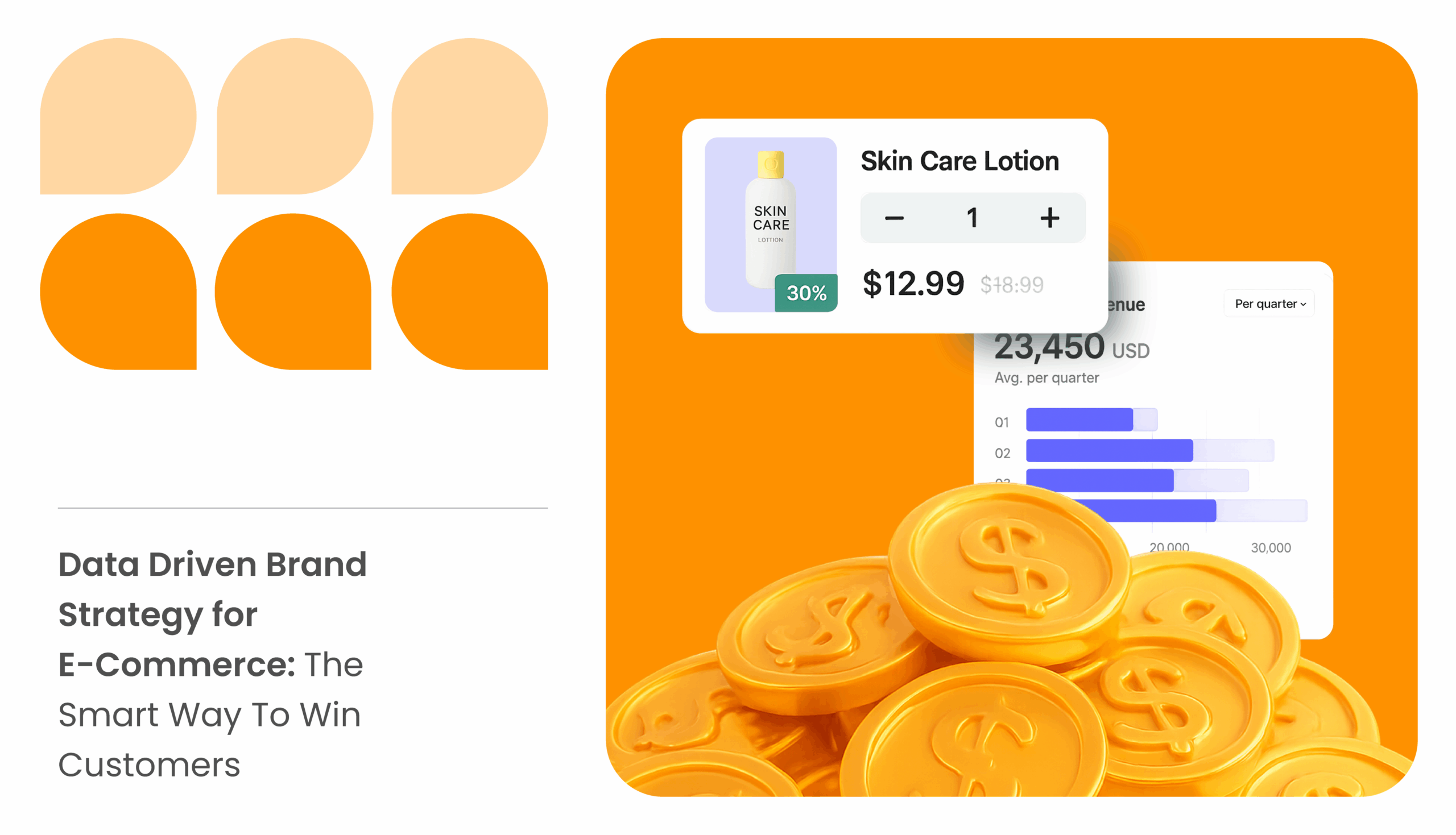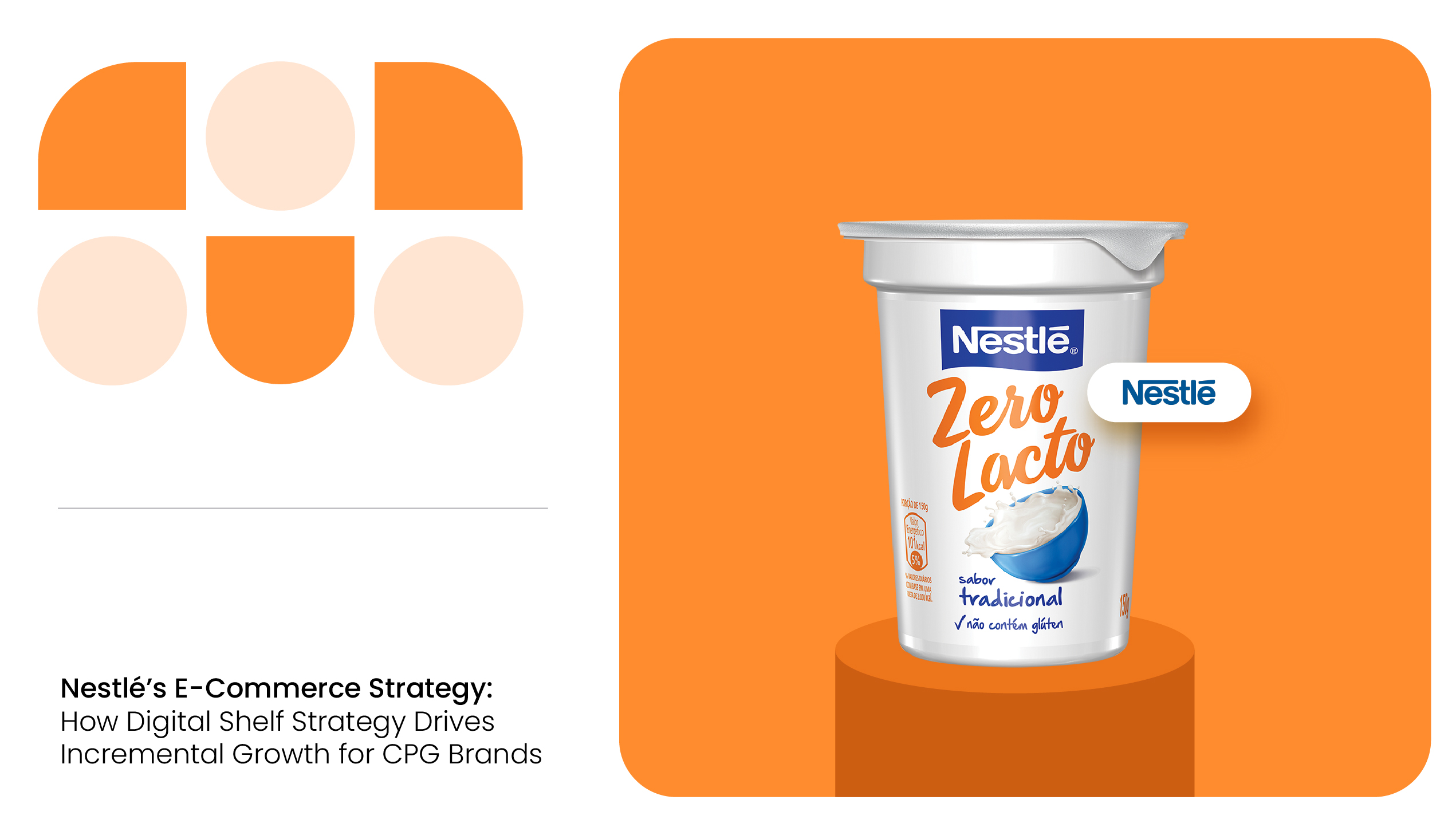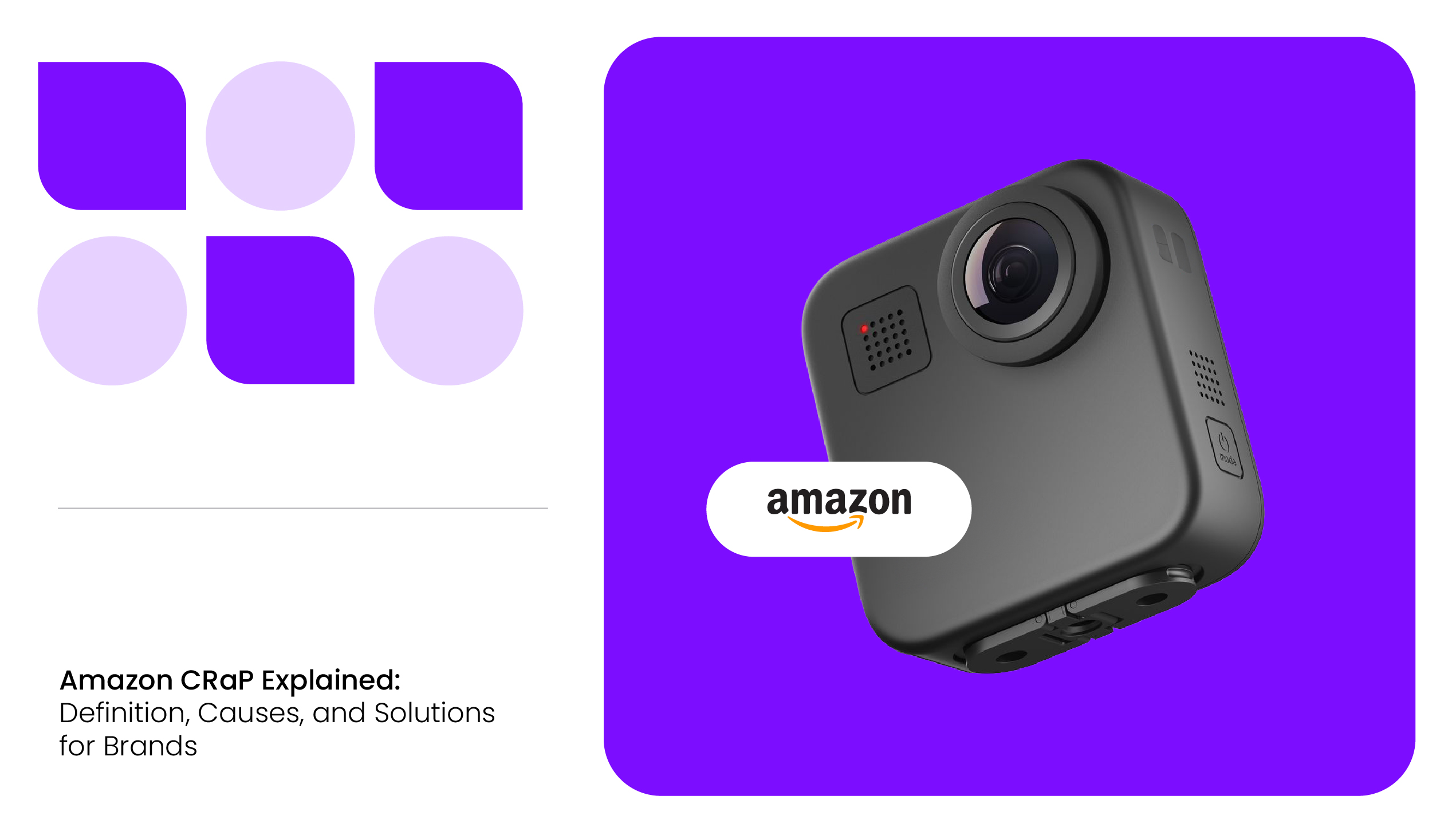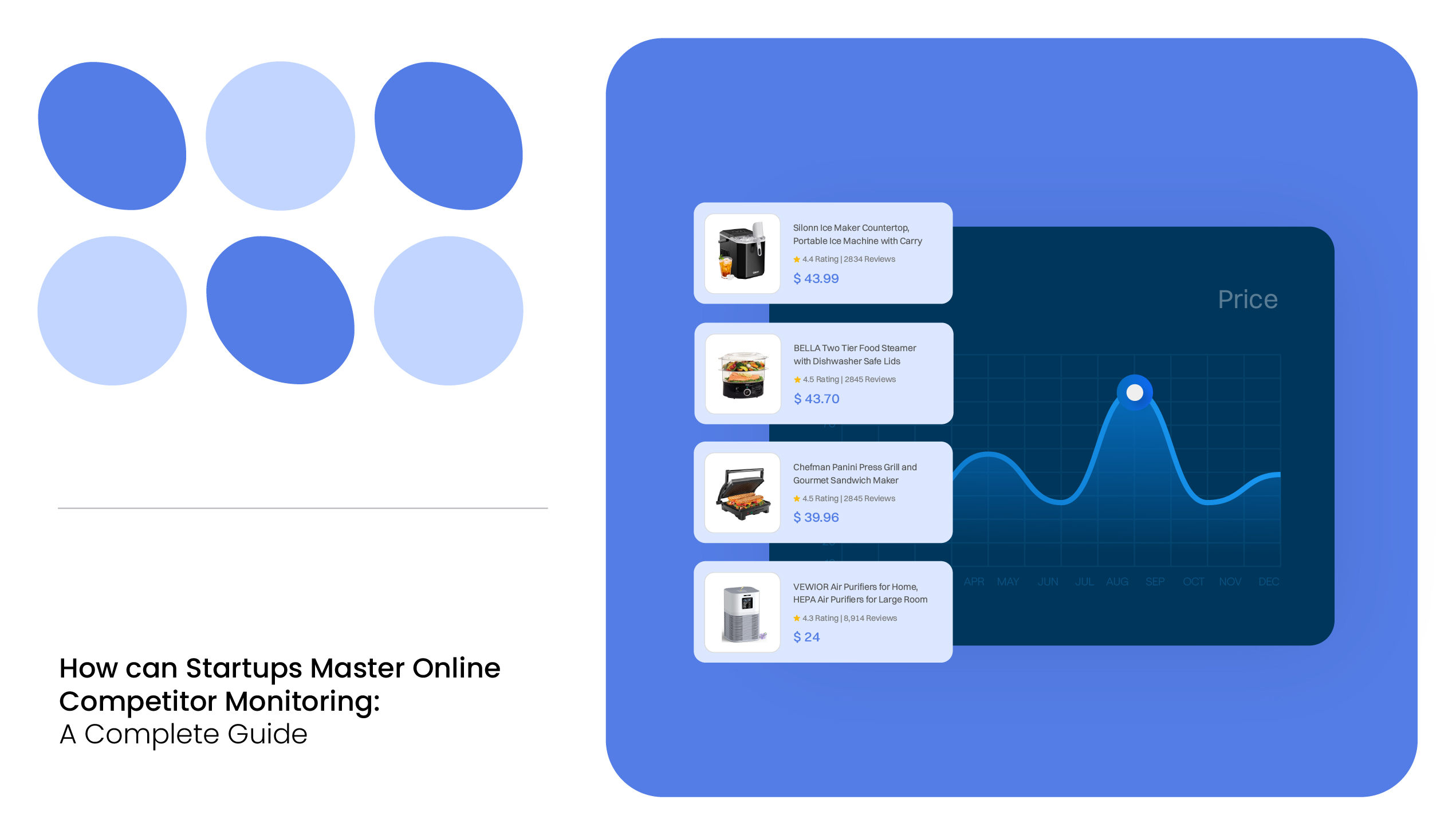Imagine you walk into your favorite store and the salesperson greets you by name, already holding the exact product you were looking for, plus a discount on your favorite brand.
Feels good, right? That’s exactly what today’s e-commerce shoppers expect online: a seamless, personalized experience that anticipates their needs.
In the crowded digital marketplace, where attention spans are short and choices are endless, simply having great products isn’t enough.
To truly connect with customers and stand out, brands need to be smarter, faster, and more intuitive. Enter data driven brand strategy for e-commerce, the secret weapon for your brand success.
This approach, paired with smart digital shelf analytics software, empowers brands to use real customer insights to craft personalized experiences, improve marketing performance, and build lasting relationships.
READ MORE | Why do you need marketplace monitoring? Check out our blog on the Ultimate Guide to Marketplace Monitoring for E-Commerce Success.
Core Benefits of Data-Driven Marketing
When done right, data-driven marketing transforms your e-commerce operation from a guessing game into a precision machine. It shifts you from broadcasting generic messages to engaging in tailored, one-on-one conversations with customers at scale.
Let’s dive into the five most powerful ways this strategy gives your brand a competitive edge.
Personalized Customer Journeys
Modern consumers expect personalized interactions, and data makes this possible at scale. For example, an online beauty retailer like Sephora uses browsing history and past purchases to recommend personalized skincare routines and makeup products.
When a shopper adds foundation to their cart, they might also be shown complementary items like concealers or setting sprays.

In the fifteenth episode of the Digital Shelf Insider podcast, Meghana explains how personalized shopper preferences help in launching a new product into the market.
Additionally, brands like Amazon send personalized birthday discounts or loyalty rewards based on user data, increasing customer engagement and encouraging return visits.
You can listen to the full episode here at:
Smarter Marketing Spend
One of the most powerful advantages of data is its ability to highlight what’s working and what isn’t. Consider a fashion brand running Facebook and Google Ads simultaneously.
By analyzing click-through rates and conversion data, the brand may find that Google Ads generate higher-value purchases.
With this insight, they can shift more of their budget to Google Ads, improving return on ad spend (ROAS). This type of resource reallocation, based on real performance metrics, ensures that every marketing dollar is put to optimal use.
Higher Customer Retention
Data helps brands understand the customer lifecycle and intervene at key moments to retain buyers.
For instance, a pet food subscription company like Chewy tracks delivery cycles and sends reminders when a customer’s supply is about to run out.
They may also offer discounts for early renewals or initiate loyalty perks after a set number of purchases. If a customer hasn’t made a purchase in several months, a targeted win-back email, perhaps with a 15% discount, can effectively re-engage them.
Real-Time Optimization
With access to real-time digital shelf analytics, brands can monitor campaign performance and customer behavior as it happens, enabling fast, informed decisions.
Take a company like Nike launching a new sneaker campaign. If their A/B testing reveals that emails with lifestyle imagery outperform product-only shots, they can switch creatives mid-campaign.
Similarly, e-commerce sites can adjust banner messages or homepage offers in real time to reflect current trends or stock availability, ensuring customers always see the most relevant content.
Competitive Advantage
Data-driven marketing gives brands an edge by enabling them to act faster and smarter than competitors.
For example, during Black Friday sales, a brand tracking customer search queries in real-time might notice a spike in demand for wireless earbuds.
They can immediately boost ad spend on those products, adjust inventory distribution, or highlight the item on their homepage before competitors catch on.
This proactive strategy, made possible through real-time digital shelf monitoring, helps brands meet demand while it’s hot and gain market share.

How To Use Data for Marketing And Sales
So, you’ve got all this customer data, now what? The real value comes when you turn that information into action, which actually helps you with your digital shelf optimization and, most of all, improves sales.
Whether you’re running a small online shop or scaling a fast-growing brand, here’s how you can boost your marketing and e-commerce brand strategy with data.
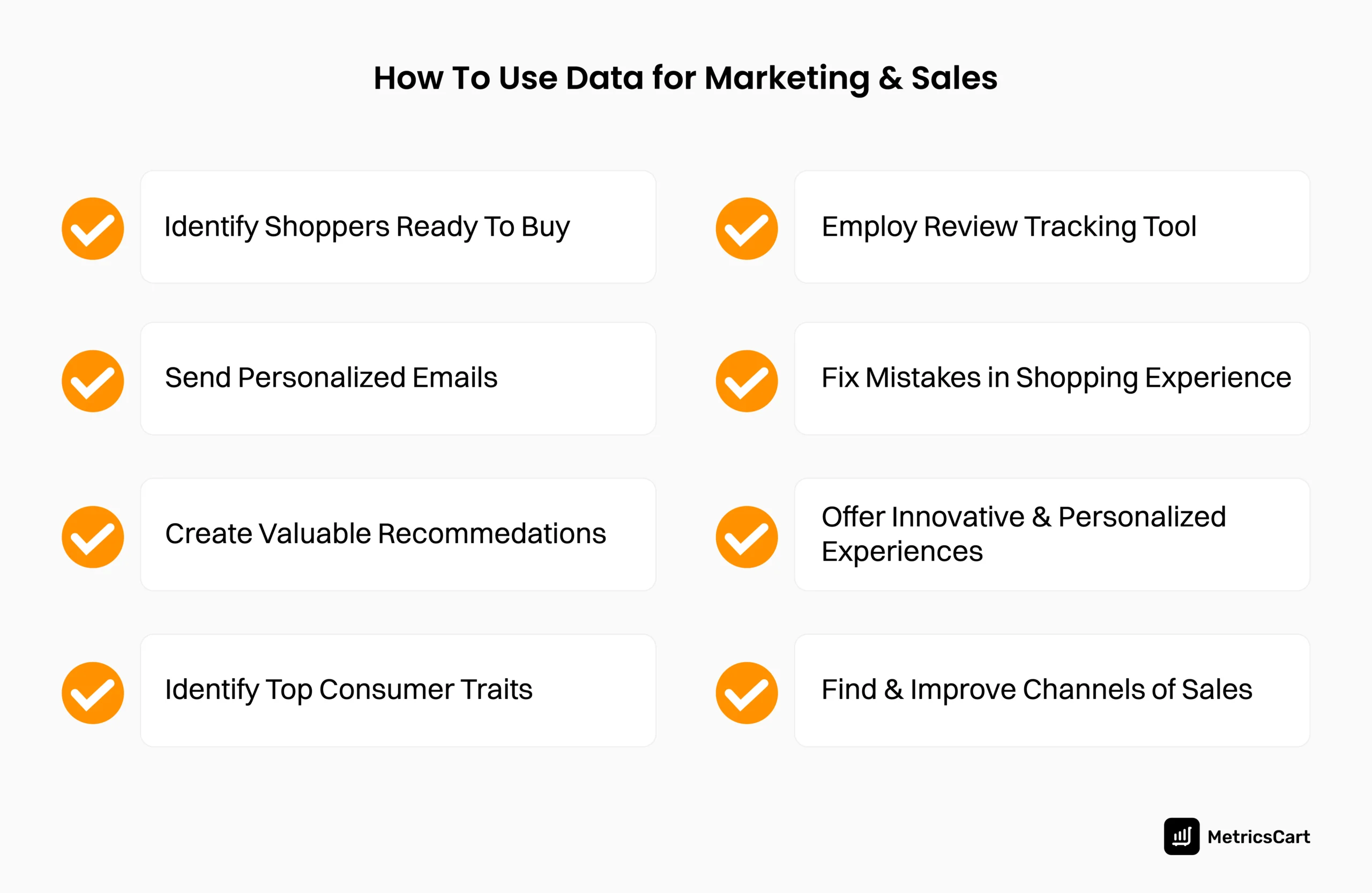
Spot the Shoppers Ready to Buy
Some visitors are just window shopping, while others are clearly ready to hit “Buy Now.” By tracking things like how often someone visits your site or what they add to their cart, you can tell who’s really interested. Then, send them a reminder email, show a discount ad, or offer free shipping to help close the sale.
Make Your Emails Smarter
Instead of blasting the same email to everyone, use data to send messages people actually care about. For example, if someone always opens your emails on Saturday mornings, schedule your messages for then. Or if they recently bought something, follow up with a “you might also like…” email.
Recommend What They’ll Love
Just like Netflix suggests shows, your store can suggest products based on what customers have looked at or bought before. If someone buys running shoes, show them matching socks or athletic wear the next time they visit. These personalized suggestions make shopping easier and increase order size.
Find More Customers Just Like Your Best Ones
Look at your top customers; those who buy often or spend a lot. Platforms like Facebook and Google let you create “lookalike audiences” that find people with similar traits. It’s one of the easiest ways to get in front of new customers who are likely to love your brand.
Fix the Leaks in Your Sales Funnel
Ever wonder why someone adds to the cart but doesn’t check out? Tools like heatmaps or screen recordings can show you where people get stuck. Maybe the shipping cost was too high or the checkout form was too long. Once you know, you can fix the digital shelf mistakes and boost your sales.
Use a Review Intelligence Tool
A review tracking tool unlocks valuable customer insights by analyzing the feedback they leave across platforms. A powerful review monitoring and analysis platform helps identify recurring themes, sentiments, and keywords that reveal what shoppers truly love or dislike about a product.
This data can be used to optimize product listings by emphasizing features customers appreciate and refining website content to better address user needs. More importantly, it can inspire the development of new products or enhancements based on real consumer feedback.
Personalize the Shopping Experience
Shoppers love feeling like your store “gets” them. Show them products based on what they’ve browsed, or greet them with a tailored homepage. For instance, if they’ve been eyeing eco-friendly items, show them your newest sustainable products right away.
Know What’s Working and What’s Not
Use data to track which channels actually lead to sales. Did someone buy after clicking a Google ad, a TikTok video, or your last email? Knowing this helps you stop wasting money on what doesn’t work and focus more on what does.
READ MORE | Want to increase your e-commerce sales? Check out our blog on How to Increase E-Commerce Sales?
Best Practices for Implementation
Adopting data-driven marketing doesn’t require a massive budget or complex infrastructure to begin with.
Here are some practical steps any e-commerce business can take to get started:
- Centralize your customer data by using a CRM or Customer Data Platform to combine insights from all touchpoints.
- Use beginner-friendly tools like Google Analytics, Klaviyo, Shopify Reports, or Hotjar to start analyzing customer behavior.
- Track key digital shelf KPIs such as conversion rate, cart abandonment, availability rate, and content quality score.
- Segment your audience into groups like new vs. returning customers or high spenders vs. browsers for targeted messaging.
- Personalize marketing campaigns by recommending products, using names, and tailoring content based on past actions.
- Automate your workflows with welcome emails, cart recovery sequences, and post-purchase follow-ups.
- Run A/B tests regularly to see which headlines, images, or offers perform better and apply the learnings.
- Be transparent with data usage by clearly stating how you collect and use data, and staying compliant with privacy laws.
Getting started with data-driven marketing doesn’t have to be overwhelming; just take it one step at a time. With the right tools and a clear focus, you’ll start seeing smarter decisions, stronger customer connections, and better results.
Conclusion
Amid the digital hustle of online shopping battlegrounds, relying on guesswork is a losing game. Data-driven marketing turns insights into action, helping brands personalize customer experiences, maximize ROI, and adapt faster than ever.
Whether you’re building a new e-commerce brand or scaling an existing one, embracing data as your core growth driver is no longer just smart; it’s essential. With the right strategy, mindset, and DSA tools like MetricsCart, data becomes your digital superpower.
Ready To Scale Your Brand and Drive Results? Unlock Your E-Commerce Potential Today!
FAQs
You can begin with affordable tools like Google Analytics, Klaviyo, or Shopify’s built-in reports to collect and use customer data for personalized emails, product recommendations, and audience segmentation.
Focus on collecting behavioral data (clicks, views, time on site), transactional data (purchases, cart history), and engagement data (email opens, ad clicks, reviews) to inform your marketing strategies.
Yes, using behavioral triggers like abandoned cart emails, personalized retargeting ads, or exit-intent popups can help bring shoppers back and recover lost sales.
Not at all; small and mid-sized e-commerce brands can benefit greatly by using data to automate emails, personalize offers, and improve the shopping experience with low-cost tools.
Avoid overcomplicating your strategy, neglecting data accuracy, ignoring customer privacy, or failing to act on insights; successful data-driven marketing requires clarity, action, and trust.

